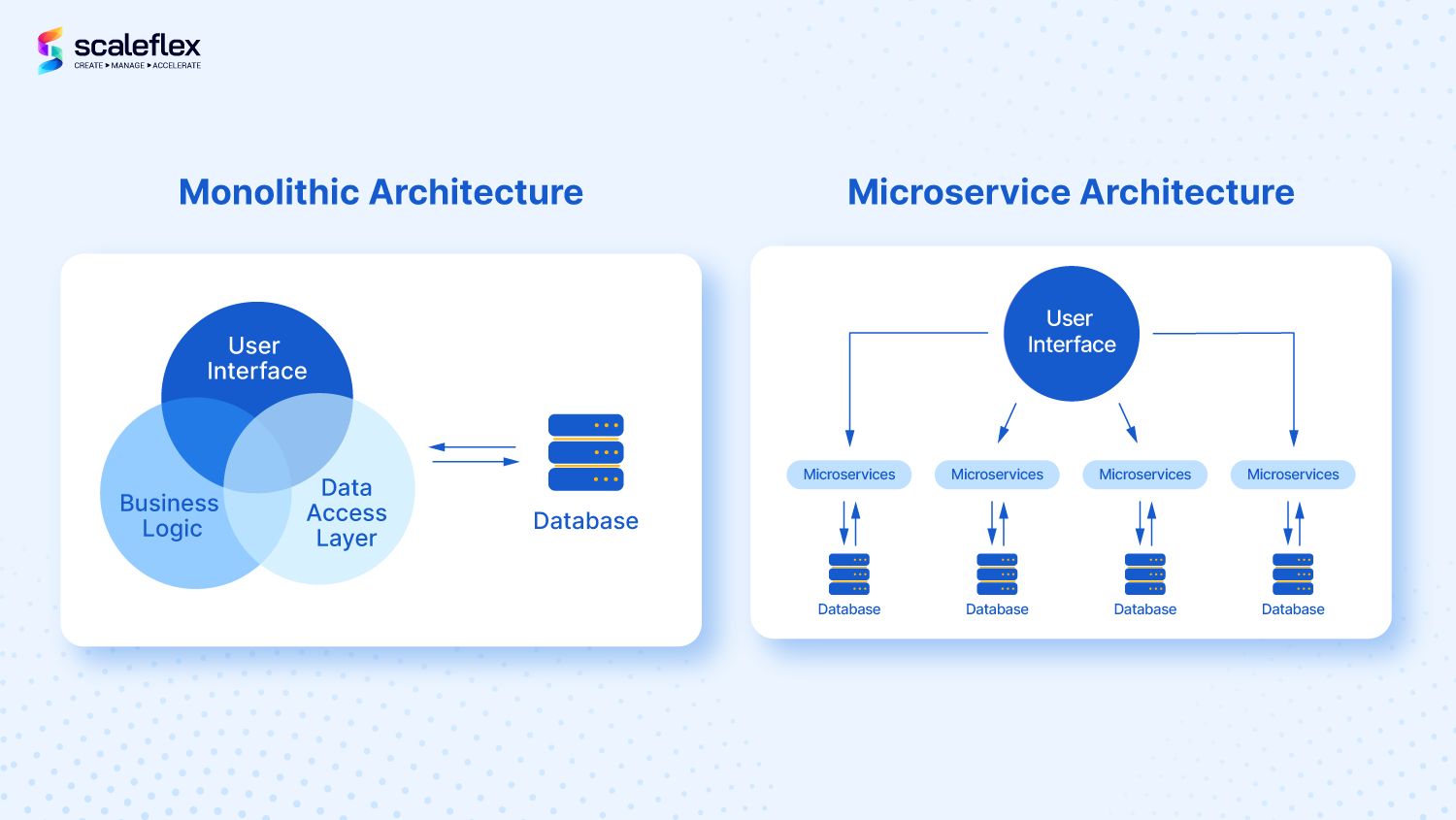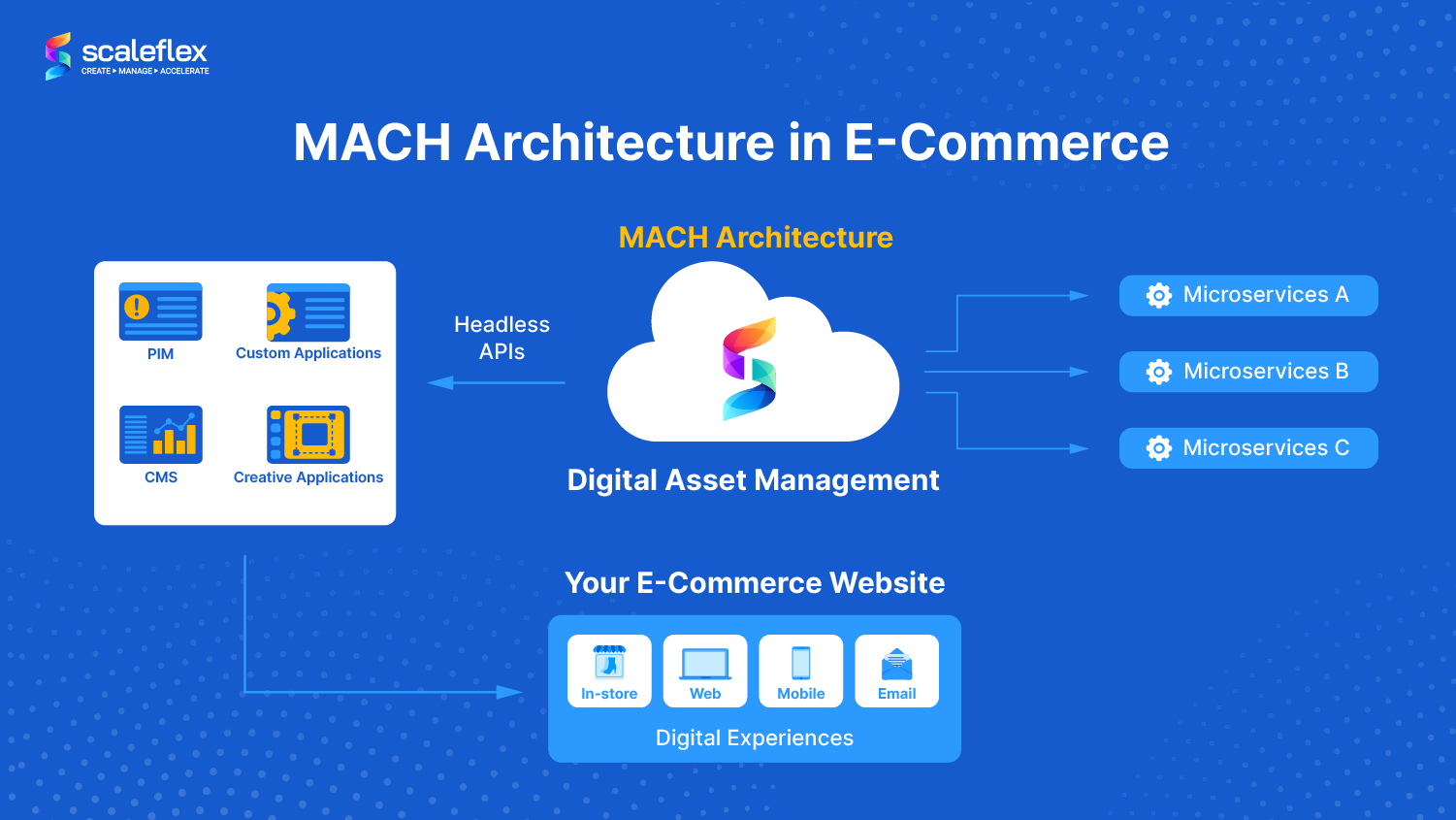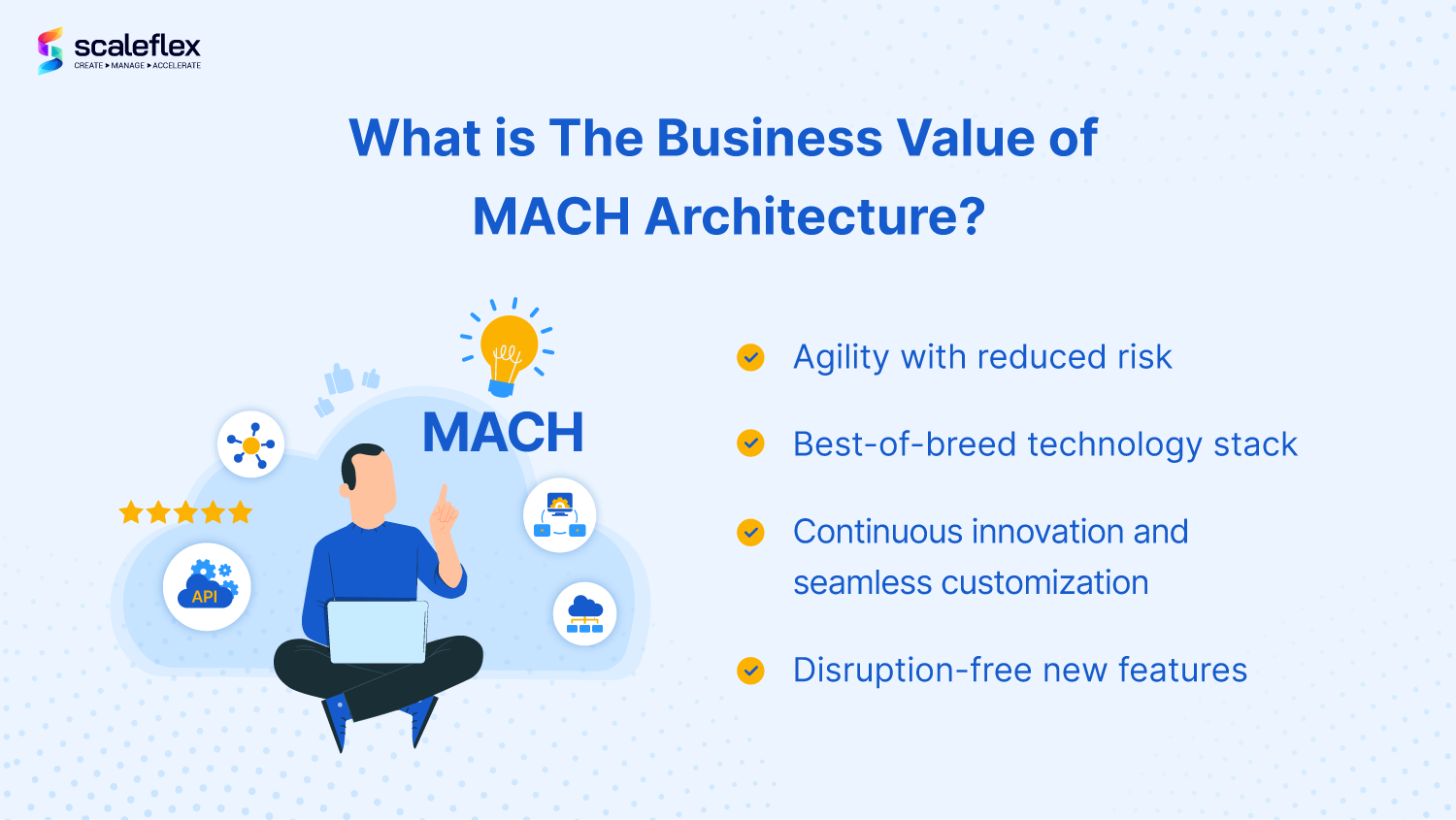What is MACH Architecture And Why Does It Matter?
Building end-to-end digital experiences has grown increasingly crucial in recent years. Yet, it takes a long time for developers to build an application or software from scratch. At the same time, c-suite executives know how important it is for enterprises to focus on agility and usability if they want to deploy new products and services quickly.
As such, applications have evolved to become more modular - using pre-build microservices and integrating popular SaaS to avoid building systems from the ground up. MACH architecture then emerged to help companies be customer-focused, flexible, and future-proof to keep up with the ever-evolving business needs and customer expectations.
What is the MACH architecture definition and its benefits?
The MACH abbreviations stand for Microservices-based, API-first, Cloud-native, and Headless.
Technologies built on MACH principles are modular, scalable, pluggable, and provide a good basis to ensure that your enterprise architecture is continuously evolving. The MACH architecture for enterprises offers great flexibility as it is simple to plug in, change, or delete technologies whenever you choose, granting business leaders the ultimate flexibility to select from the very best solutions in the market.
M: Microservices
At the heart of MACH is the belief that traditional monolithic architecture, in which all the components of a digital system are tightly coupled and built together as a single unit, is no longer sufficient for today’s fast-paced, constantly-evolving digital landscape.
Instead, MACH advocates for breaking down these monolithic systems into smaller, independent microservices that can be developed, deployed, and managed separately. Think of microservices like smaller “stores” in a shopping complex. Rather than tearing down and rebuilding a shopping mall when it no longer attracts shoppers (as in a monolithic approach), you can revamp the complex by changing the shops based on seasonal demand.

One of the key benefits of microservices is that they allow teams to work more independently and iterate more quickly. Because each microservice is self-contained and has a well-defined set of responsibilities, developers can focus on a specific part of the system without having to worry about the rest. This also means that teams can deploy updates to a single microservice without affecting the rest of the system, which can greatly reduce the risk of downtime and other disruptions.
A: API-first
The next core aspect of the MACH architecture definition is API-first design. This means that the design of an Application Programming Interface (API) is considered at the very beginning of a project, rather than as an afterthought. By designing APIs first, developers can ensure that the software is well-documented, easy to use, and consistent across the entire system. This makes it easier for teams to build and integrate new features and functionality into the system, and helps to reduce the risk of errors and conflicts.
Through the use of a common language, numerous APIs combine to create a microservices-based architecture that facilitates data interchange across the services. Similar to how travel agencies function as the liaison to book everything for travellers, including special requests (food restrictions, room allocations) can be a good comparison for an API.
C: Cloud-native
Cloud-native is another key element of the MACH architecture. By leveraging the power of cloud platforms, companies can take advantage of flexible, scalable, and cost-effective computing resources to support their digital systems. Cloud computing also enables organizations to quickly deploy and manage their microservices and take advantage of advanced features like auto-scaling and load balancing.
H: Headless
Finally, headless architecture is a crucial component of MACH principles. Headless means that the front-end and back-end of a digital system are decoupled, with the front-end being a “headless” consumer of APIs from the back-end. This allows teams to quickly build and deploy new user interfaces and experiences, as well as to take advantage of new technologies and platforms as they emerge.
It also makes it easier to scale and maintain the system in the long run, as the front-end and back-end can be developed and managed independently.
How does a MACH Architecture look like?
To further demonstrate what we mean, here’s a visual of a MACH architecture example in an e-commerce business:

In the visual above, we have numerous cloud-based SaaS applications connected to Scaleflex’s Filerobot Digital Asset Management, a MACH-based DAM certified by the MACH Alliance.
Filerobot DAM manages all of your digital assets in one central location and delivers content to your e-commerce website and other digital properties. The MACH approach can be a powerful tool for organizations looking to effectively manage their digital assets while maintaining their current CMS, PIM, MAM, ERP technologies.
Why you need to invest in MACH?
The freedom to select from the best-of-breed tools is one of the main benefits of switching from suite-based technology to MACH certified software. MACH allows companies to permanently end the replatforming cycle.
In addition to preventing another incidence of being constrained by outdated technology and the incapacity to adapt and evolve, here are four more benefits of MACH technologies:
- Stay agile with reduced risk: With this agile design, you can deploy your MVP (minimum viable product) much faster than ever before. Businesses no longer need to save money on large-scale implementations when they can quickly roll prototypes to test out important concepts.
- Use a best-of-breed approach: MACH approach enables businesses to benefit from the most cutting-edge technologies. Enterprises no longer have to accept inferior add-ons that are included with software suites, and MACH technologies can help to maintain current functionalities that businesses have already invested in and are happy with because of its composable nature.
- Innovate and customize seamlessly: Adapting quickly to your customers' needs is vital and should be prioritized by every forward-looking business. An essential component of the MACH design is the capacity to develop and adapt the consumer experience continuously. MACH makes it possible to offer a redesigned experience for an enterprise customer or add a quick feature over the weekend.
- Say goodbye to upgrades: Replatforming projects that look like disruptive upgrades will be a thing of the past. Never again will you need to be concerned about them. All releases using the MACH technology are automated and non-breaking. This is made feasible by the distinct, intrinsic border between the MACH-based software codes and your existing technology eco-system.

What is the MACH Alliance?
Now that we know what MACH software architecture is. What then, is the MACH Alliance ? Simply put, the MACH Alliance is a collection of organizations that prioritize APIs over everything else, serving as the movement’s hub.
All members of the MACH Alliance have to meet a stringent set of certification standards and these companies have come together to promote a new approach to building digital experiences.
Conclusion: MACH it, or break it
Customers are rapidly getting more technologically advanced today. Outdated technology is no longer practical for businesses that constantly evolve to meet client expectations. Companies understand that mastering "digital" is essential to their success in the future.
Enterprise software packages are no longer the best option as companies search for new and improved ways to stay flexible, adaptable, customer-focused, and future-proof. Future prosperity depends on digital transformation, and many businesses use MACH-based architecture to make it happen. In fact, 80% of key decision makers see MACH as the future of architecture.
To stay ahead of the competition, enterprises should leverage MACH technology, which offers a plethora of business benefits that traditional monolithic software cannot keep up. Connect with our DAM experts to find out how a MACH DAM can benefit your organization.





